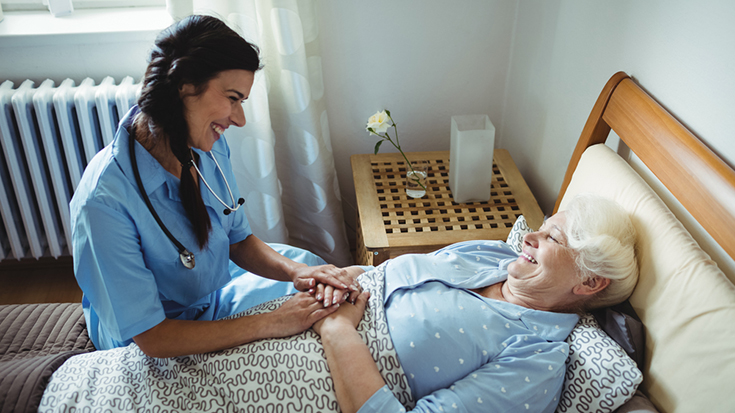
In 2016, the AARC circulated a survey aimed at looking at the role of the respiratory therapist in pre- and post-discharge practices specific to COPD.
Now the results are in, and according to AARC Executive Director Thomas Kallstrom, MBA, RRT, FAARC, who co-authored an abstract on the study that was presented at the recent American Thoracic Society (ATS) conference, the findings suggest home oxygen patients could benefit from greater RT involvement in their care.
Findings from the Respiratory Therapist Home Oxygen for Chronic Obstructive Pulmonary Disease (RisOTTO) include:
- About 92% of RTs were somewhat to very familiar with the CMS National Coverage Determination (NCD) for Home Use Oxygen, which Kallstrom deemed noteworthy since the vast majority of the 492 respondents who met eligibility criteria were hospital-based.
- For patients at rest, a third of therapists reported obtaining a pulse ox saturation or arterial blood gas within 48 hours of discharge in every case; another third obtained these measurements most of the time.
- For patients who were asleep, these parameters were checked rarely or never 49% of the time.
- Patients were more likely to be tested more frequently by therapists who had been in the profession for more than 30 years vs. those who had been in for ten years or less.
- Decisions on the type of equipment the patient would receive were made by the ordering physician about 30% of the time; about 18% of the time this task fell to the social worker; and about 17% of the time to the RT.
- About 17% of the time the DME made the decision on type of equipment.
- RTs were most knowledgeable about stationary oxygen concentrators, portable concentrators, liquid oxygen, and conserving devices. Their area of weakest knowledge was with home transfill units.
Kallstrom believes RTs have enhanced skills regarding oxygen and delivery systems for the home, and the results of this study suggest those skills are being underutilized.
“The RisOTTO study has documented multiple opportunities for respiratory therapists to play a more prominent role to improve hospital to home transitions for hospitalized patients with COPD who are on oxygen,” Kallstrom said.
Patient survey agrees
Home oxygen patients who took part in another survey presented at the ATS conference echo that sentiment. Conducted online by the ATS Nursing Assembly Oxygen Working Group, which included representation from the AARC, the poll was answered by 1926 home oxygen patients who weighed in on everything from equipment to access to quality of life.
According to Kallstrom, the survey found fewer than 10% of patients received their oxygen instruction from a clinician. In 64% of cases, that instruction was provided by a delivery person, and in another 10%, no instruction was provided at all.
“Looking closer, 35% reported being either ‘very’ or ‘somewhat’ unprepared to operate equipment even after instruction,” Kallstrom said. “Again this drives home the point that the RT is underutilized in the education on the oxygen delivery devices that the patient receives.”
The survey also suggested patients need more testing to ensure their oxygen prescription is correct. Kallstrom believes the RisOTTO study backs up that premise too, and sees it as an area where greater RT involvement could make a difference. “There is a notable discrepancy regarding O2 assessment before discharge from the hospital, especially for determination on activity and sleep assessment.”
Kallstrom’s co-authors on the RisOTTO study include Ai-Yui M. Tan, MD, David L. Vines, MHS, RRT, FAARC, Valentin Prieto-Centurion, MD, Melissa Gutierrez-Kapheim, MS, and Jerry A. Krishnan, MD, PhD.